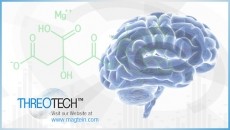Maximum vitamin and minerals level model updated
and vitamins under EU law has been updated by UK scientists to
include more current data and categories for nutrients.
The Commission's attempt to harmonise maximum dosage levels for supplements and fortified foods has caused contention across the bloc, but this development has been welcomed by trade groups.
Member states differ on what they find acceptable for upper limits with countries such as the UK traditionally accepting higher levels.
If lower levels were prescribed its economy - worth some €325m - would be affected.
To set the levels the Commission has included results from the European Food Safety Authority, the Institute of Medicine (IOM) in the US and the Expert Group on Vitamins and Minerals (EVM).
These methods were outlined in the July orientation paper, but came under criticism for determining levels even though there was no dose response data available for people.
The updated version has been welcomed by trade groups, who have hailed it as an "appropriate model."
The new model is based on a system of categorizing nutrients into three risk groups: those with no evidence of risk, those with a low risk of exceeding the upper level, and those with the potential risk of exceeding the upper level.
It was devised by a scientific team led by Professor David Richardson, and its methodology is supported by the European Responsible Nutrition Alliance (ERNA), which hopes it will play a key role in setting levels.
Professor Richardson said: "We have found that when using the latest data from mature markets such as the UK and Ireland where food supplements and fortified foods co-exist in the market, the model's methodology has remained sound.
The maximum safe levels derived from it are flexible enough to be applied in all Member States and in different communities."
Professor Richardson added that his model takes into account nutrients from all sources; characterises risk using a 'Population Safety Index' (PSI); uses both quantitative and qualitative data, and reflects current market practices in Europe including food fortification.
He said: "The broad principles set out in the orientation paper are pragmatic and sensible, and they provide a good foundation for a risk management model that primarily takes into account the protection of health of consumers, facilitation of consumer choice, opportunities for product innovation and avoidance of barriers to trade."
ERNA chairman Gert Krabichler said: "We fully support Professor Richardson's risk management model.
"We hope it will serve as an appropriate model for the European Commission when it develops its proposal for setting maximum levels in fortified foods and food supplements in the coming months."
Last year the European Food Safety Authority (EFSA) concluded its series of scientific opinions on tolerable upper intake levels for 29 nutrients; specified numerical upper intake levels for 16, and gave qualitative risk assessments for the others where the existing data was insufficient.
EFSA's results have been criticised as "scientifically flawed" by the Alliance for Natural Health, which urged the commission to look again at the paperwork before making any final decisions.
The Commission has not set a deadline for finalising the details on the setting of maximum levels, which falls under the 2002 Food Supplements Directive and fortified foods regulation.












